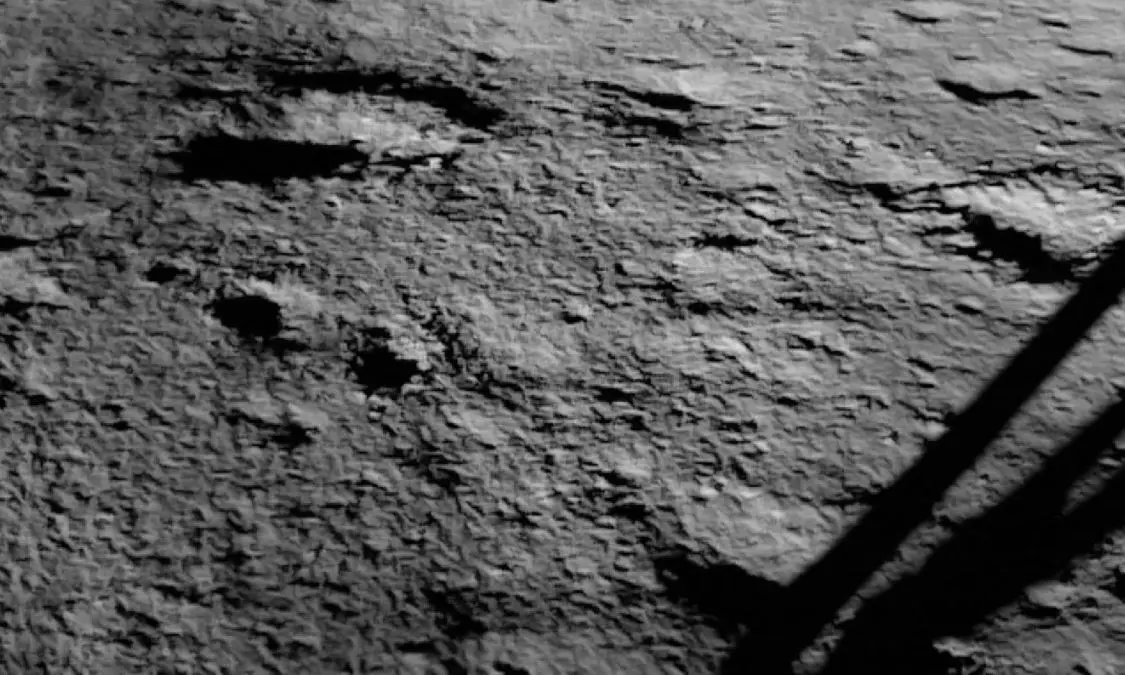Chandrayaan 3- Photos of first glimpse of the moon
The images captured by Chandrayaan-3 revealed the lunar landscape in remarkable detail
By Anoushka Caroline Williams
Hyderabad: In a historic leap towards lunar exploration, India’s Chandrayaan-3 spacecraft, which touched the moon on August 23, unveiled breathtaking images of the lunar surface before its landing. The release of these images marked a significant milestone in India’s space exploration by the Indian Space Research Organisation (ISRO) and also set the stage for an eagerly awaited soft landing near the moon’s South Pole.
Images from the lunar frontier
Chandrayaan-3 Mission:
— ISRO (@isro) August 23, 2023
Updates:
The communication link is established between the Ch-3 Lander and MOX-ISTRAC, Bengaluru.
Here are the images from the Lander Horizontal Velocity Camera taken during the descent. #Chandrayaan_3#Ch3 pic.twitter.com/ctjpxZmbom
The images captured by Chandrayaan-3 revealed the lunar landscape in remarkable detail. Craters, a defining feature of the moon’s surface, appeared to grow in size as the spacecraft approached its destination. These images served as a tantalising preview of the lunar terrain that the lander and rover are poised to explore.
India’s lunar pioneering
India’s foray into lunar exploration has been marked by steady progress and remarkable achievements. Chandrayaan-3 represents the country’s third lunar exploration mission, building upon the successes of its predecessors. The journey began 15 years ago with India’s first moon mission in 2008, which made groundbreaking discoveries by detecting water molecules on the lunar surface and confirming the presence of an atmosphere during the day.
Chandrayaan-2: A stepping stone
The Chandrayaan-2 mission, launched in July 2019, marked a significant step forward for India’s lunar aspirations. It comprised an orbiter, a lander, and a rover. While the orbiter continued to orbit and study the moon, the lander rover faced challenges during its descent and ultimately experienced a crash landing.
Nail-biting moments
The journey to the soft landing on the lunar surface was fraught with challenges. On the path to the historic moment, the scientists at ISRO in the control room, experienced tense moments as it began its descent. It executed a gradual reduction in speed from 1.68 km per second to nearly zero, enabling a gentle and controlled landing on the lunar surface.
South Pole challenges
The region near the moon’s South Pole, where Chandrayaan-3 has landed, poses unique challenges. Its surface is characterised by rugged terrain, marked by uneven landscapes, craters, and boulders. Navigating this challenging environment requires precision and cutting-edge technology.
With Chandrayaan’s landing, India once more became only the fourth country, after the United States, the erstwhile Soviet Union, and China, to achieve a soft landing on the moon.